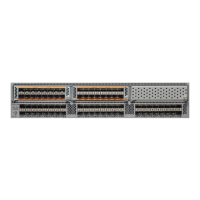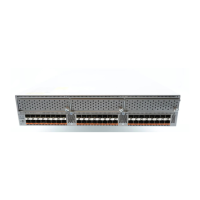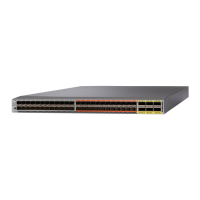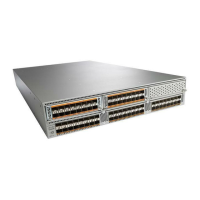Send feedback to nx5000-docfeedback@cisco.com
1-3
Cisco Nexus 5000 Series Switch CLI Software Configuration Guide
OL-16597-01
Chapter 1 Configuring Port Channels
Information About Port Channels
• Priority-Flow-Control
• Untagged CoS
Use the show port-channel compatibility-parameters command to see the full list of compatibility
checks that the Cisco NX-OS uses.
You can only add interfaces configured with the channel mode set to on to static port channels. You can
also only add interfaces configured with the channel mode as active or passive to port channels that are
running LACP. (See “Port-Channel Modes” section on page 1-6 for information on port-channel modes.)
You can configure these attributes on an individual member port.
When the interface joins a port channel, some of its individual parameters are replaced with the values
on the port channel, as follows:
• Bandwidth
• MAC address
• Spanning Tree Protocol
Many interface parameters remain unaffected with the interface joins a port channel, as follows:
• Description
• CDP
• LACP port priority
• Debounce
Load Balancing Using Port Channels
The Cisco NX-OS load balances traffic across all operational interfaces in a port channel by reducing
part of the binary pattern formed from the addresses in the frame to a numerical value that selects one
of the links in the channel. Port channels provide load balancing by default and the basic configuration
uses the following criteria to select the link:
• For a Layer 2 frame, it uses the source and destination MAC addresses.
• For a Layer 3 frame, it uses the source and destination MAC addresses and the source and
destination IP addresses.
• For a Layer 4 frame, it uses the source and destination MAC addresses, the source and destination
IP addresses, and the source and destination port number.
You can configure the switch to use one of the following methods to load balance across the port channel:
• Destination MAC address
• Source MAC address
• Source and destination MAC address
• Destination IP address
• Source IP address
• Source and destination IP address
• Destination TCP/UDP port number
• Source TCP/UDP port number
• Source and destination TCP/UDP port number

